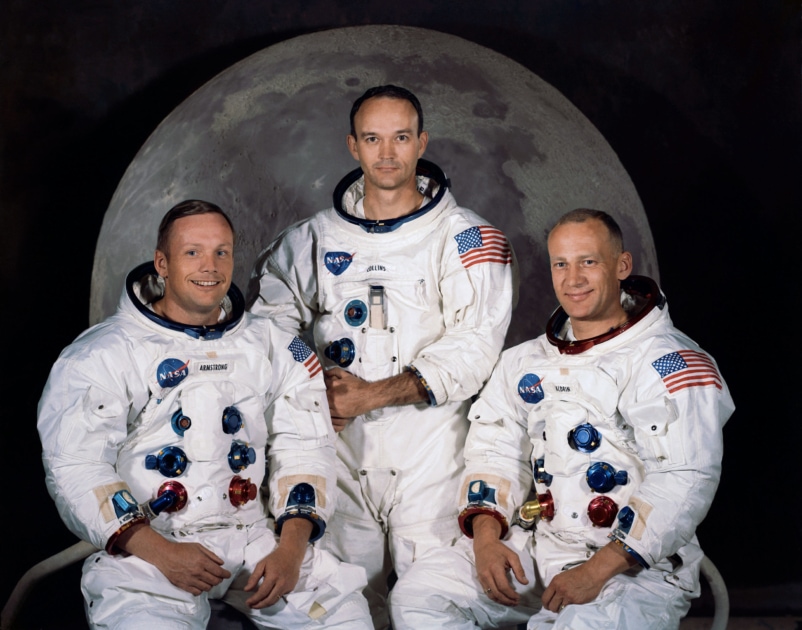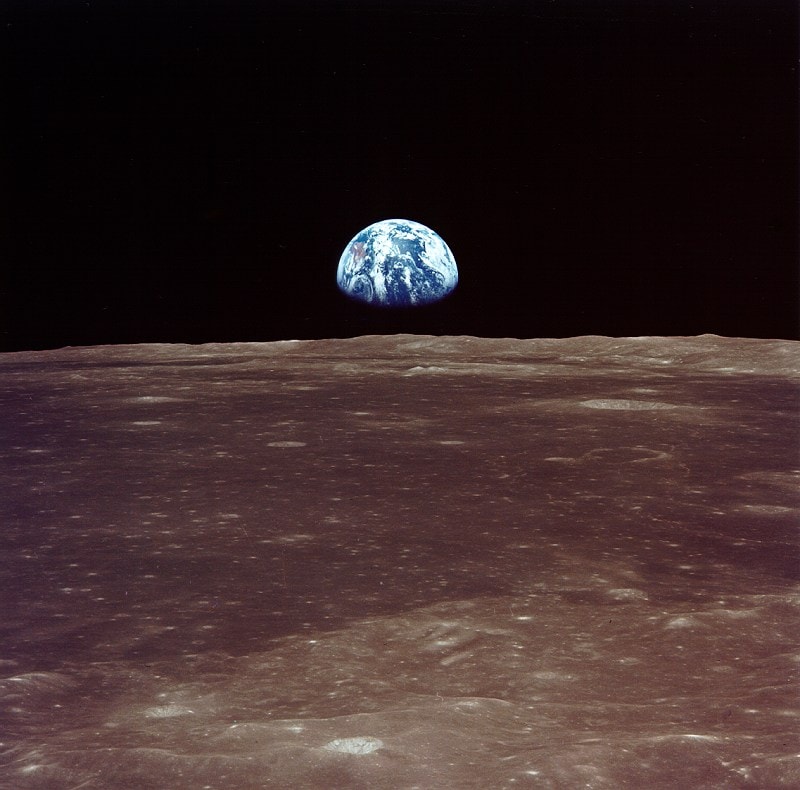Armstrong and Aldrin: The Eagle Has Landed
It's been over a half century since the historic landing on the Moon. See Walter Cronkite's television coverage of the event!

It is one of the defining moments of the twentieth century – the first lunar landing. The Apollo 11 crew – Neil Armstrong, Edwin “Buzz” Aldrin Jr., and Michael Collins – made aeronautical history as they blasted into space from the Kennedy Space Center headed on a trajectory straight for the surface of the Moon.
The Eagle Has Landed
Three days later, the astronauts were in lunar orbit, and Armstrong and Aldrin boarded the Lunar Module Eagle for the descent to the Moon’s surface. The Eagle landed in the Moon’s Sea of Tranquility on July 20, 1969, at 4:17 p.m. Eastern Daylight Time with less than thirty seconds worth of fuel remaining. Six hours later, the world watched on live television as Armstrong was the first man to set foot on the Moon, achieving a goal set forth by President John F. Kennedy in May of 1961 to put a man on the Moon before the end of the decade. Armstrong’s iconic words, “That’s one small step for man, one giant leap for Mankind,” have resonated throughout the five decades since this historical moment.
Did Armstrong say “one small step for man” or “for a man”? Here’s what audio experts determined.
Armstrong and Aldrin spent two and a half hours exploring the Moon’s surface in gravity only one-sixth as powerful as Earth’s. They later rejoined Collins back in the Command Module Columbia for the return trip home. On July 24, the astronauts’ spaceship splashed down in the Pacific Ocean southwest of Hawaii. The new heroes were welcomed home with great fanfare as they embarked on a whirlwind world tour.
Read the wonderful Apollo 11 Moon Landing 50th Anniversary Memories (July 2019)
Post-Flight Press Conference
Armstrong and Aldrin spoke at a post-flight press conference and later to Congress about their lunar experience. What did they say? Here are some of their comments in their own words.
ALDRIN:
So many people have done so much to give us this opportunity to place this American flag on the surface. To me it was one of the prouder moments of my life, to be able to stand there and quickly salute the flag.
ARMSTRONG:
We landed on the Sea of Tranquility in the cool of the early lunar morning when the long shadows would aid our perception. The sun was only 10 feet above the horizon. While the Earth turned through nearly a full day during our stay, the sun at Tranquility Base rose barely 11 degrees – a small fraction of the month-long lunar day. There was a peculiar sensation of the duality of time – the swift rush of events that characterizes all our lives – and the ponderous parade, which marks the aging of the universe.
ALDRIN:
We deposited several items on the lunar surface. One was a disc with 73 messages from nations of the world. There was a patch from Apollo 1, and various medals from the cosmonauts. We also elected as a crew to deposit a symbol which was representative of our patch; that is, the U.S. eagle carrying the olive branch to the lunar surface. We thought it was appropriate to deposit this replica of the olive branch before we left.
ARMSTRONG:
We had very little trouble, much less trouble than expected on the surface. It was a pleasant operation. The primary difficulty that we observed was that there was just far too little time to do the variety of things that we would have liked to have done. We had the problem of the five-year-old boy in a candy store. There are just too many interesting things to do.
ALDRIN:
I believe that what this country set out to do was something that was going to be done sooner or later whether we set a specific goal or not. I believe that from the early space flights, we demonstrated a potential to carry out this type of a mission. And again it was a question of time until this would be accomplished.
ARMSTRONG:
Mystery, however, is a very necessary ingredient in our lives. Mystery creates wonder, and wonder is the basis for man’s desire to understand. Who knows what mysteries will be solved in our lifetime and what new riddles will become the challenge of the new generations?
Fun Fact: All the Apollo missions were done during a waxing crescent phase of the Moon, First Quarter. They needed to land when the light was at the proper angle. Apollo 11 had to land during a narrow time window of sixteen hours every 29.5 days, so that they could see the lunar features during their descent onto the Moon’s surface.
This article was published by the staff at Farmers' Almanac. Do you have a question or an idea for an article? Contact us!







